‘Making a Difference’: Where Are They Now? – Dr. Tim Meade
Tiny Tim & Friends (TTF) in Lusaka, Zambia
How access to scientific literature crucially improves the lives of affected children, adolescents and pregnant women from some of the most economically deprived compounds in Lusaka, Zambia.
By Nina Elsemueller
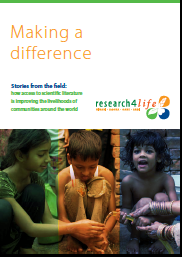
Four years ago we included the impressive story of Dr Tim Meade’s non-profit organization Tiny Tim & Friends (TT&F) into our ‘Making a Difference’ compilation of stories from the field around the world. The organization runs a pediatric clinic in Lusaka/Zambia providing medical care, counselling and support to currently over 930 HIV+ individuals. It shows how access to scientific literature crucially improves the lives of affected children, adolescents and pregnant women from some of the most economically deprived compounds in the Lusaka area. Since its founding in 2003, TT&F offers services that ensure their clients are receiving care from latest medical knowledge and are empowered to overcome the stigma and discrimination they may face in their everyday life.
Program Development
‘Making a Difference’ outlined various policies implemented by TT&F – the knowledge about health advantages of breastfeeding for infants with HIV-infected mothers and training for social workers to empower them in supporting mothers and children.
Is there any news of these? How have they been taken by the society over the last years?
“So much has been learned and published about these broad topics which have changed dramatically since 2011. It has now become standard of care that HIV-infected children of any age do better when started on anti-retroviral drugs therapy without delay, in order to suppress the virus and stop its progression. We have been doing that for years, based on papers that were available to us through HINARI/Research4Life. Breastfeeding and the dangers of substitute feeding for some resource-limited populations, is now more fully understood and widely known. Today, it is general knowledge that if a HIV-infected mother has good viral suppression with anti-retroviral drugs then she can safely breastfeed, with all the advantages that this confers. Furthermore, we were able to expand our programs in working directly in the community through volunteer women’s groups and community outreaches to provide greater HIV awareness, sensitization and testing.”
We heard how, in the past, HIV/AIDS has been one of the central challenges Zambia has to face and that mother-to-child transmission is a common route of infection.
Do you think that Zambia has made progress in fighting HIV/AIDS and especially infection through mother-to-child transmission since 2011? If yes, which parties have addressed this problem lately and how do you evaluate its impact?
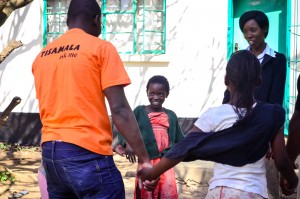
“Zambia has made so much progress on our journey to ZERO mother-to-child transmission of HIV. Take 2014 as an example: Of the 80,000 lives births to HIV+ women in the year, only 14,000 cases of transmission to the child were recorded, which is hundreds of thousands of fewer pediatric HIV cases than 10 years ago. This year should be even stronger. We very well may be able to reach ZERO mother-to-child transmission in the next few years. This achievement has been the work of the Zambian Ministry of Health, the aid agencies, the developmental agencies and several small charities such as ours that work in this field throughout the country.”
« HINARI/Research4Life continues to be a game-changer for us. It has allowed a small start-up NGO such as we were 10 years ago, to become a fully relevant medical and social intervention with international donor funding and a much more significant foot print. »
Impact of HINARI
Do you still find HINARI a useful resource in the formulation and evaluation of your medical and psychosocial care programs? What is its impact on ground level patient care?
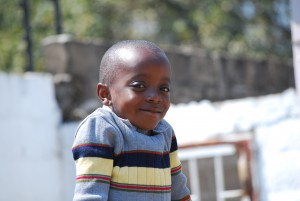
“HINARI/Research4Life resources continue to play an important role in our self-education and to have an effect on our operating procedures and policies. It helped to shape our programs and continues to do so today. Best practice in this field is still being defined in many areas and the advantage of medical research – sometimes from half way around the world, sometimes from the compound next to the ones we are working in – continue to shape and influence our work. Without a thorough knowledge of the latest medical literature we would not be able to provide this level of care. Staying up to date in this fast changing field requires access to the latest medical journals.”
Future Vision of Tiny Tim & Friends
Do you like to tell us more about the future plans of TT&F and its programs?
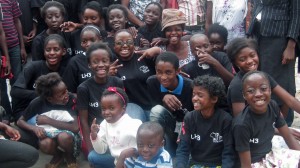
“TT&F and its programs and plans continue to focus on urban poverty around our capital city Lusaka. We would like to widen the net from 5 compounds to more than 10 compounds, and eventually all across Zambia, ensuring that pregnant women with HIV are being tested and treated, that severely vulnerable children with HIV are on therapy and responding. We believe that our mission and goals are important ones which ought not to be left to overstretched public health care systems such as our own. In that sense, TT&F has a very special mission to continue filling.”
Dr Tim’s path today
Last time we heard from you, you were Country Director of TT&F. Is this still the case or has your role changed?
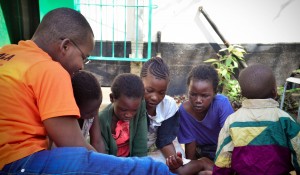
“I am still the Country Director as well as the Medical Director for TT&F. I have several other projects that I am working on, including building a state of the art hospital in Lusaka, which can serve the entire SADC Region, so my role has become more supervisory than in 2011. But that is thanks to the excellent team of devoted social workers and clinicians that make up the TT&F offices here in Lusaka.”
Research4Life
Research4Life
This story is part of the Information in Action case study collection. Read more stories from Research4Life users.
About the author
Nina Elsemueller

Nina Elsemueller is interning with the Corporate Responsibility team of Elsevier, a founding partner and the leading contributor to the unique public-private partnership Research4Life. She holds a Bachelor degree in Sociology and Business Administration from the University of Mannheim/Germany.





